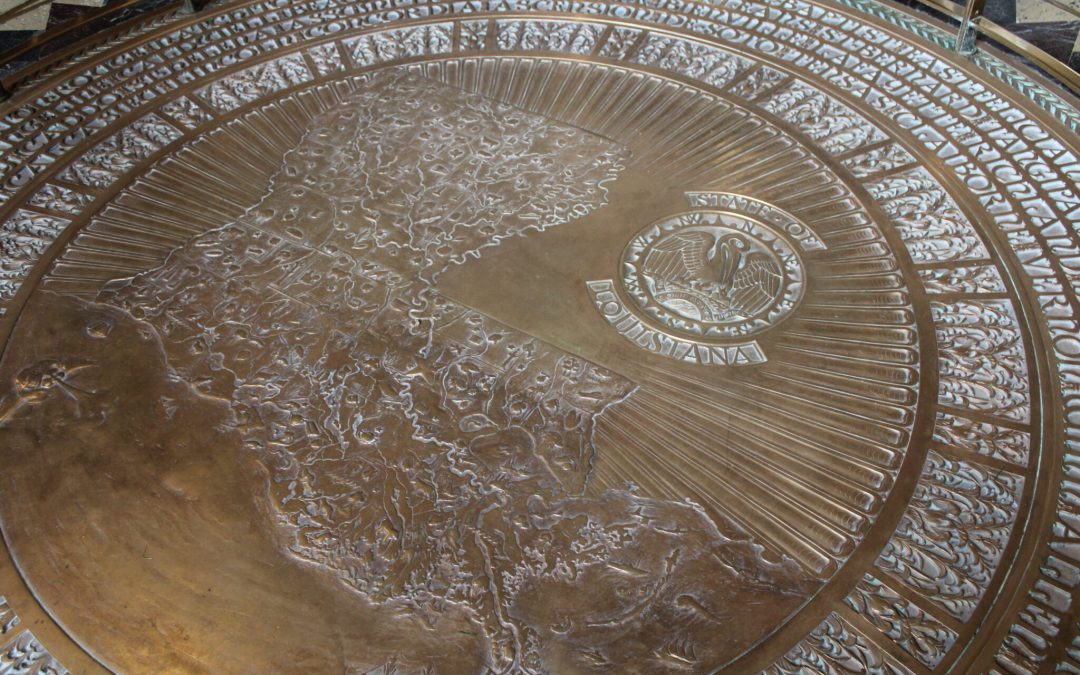Yesterday, the Louisiana Legislature, with a two-thirds vote, successfully overrode Gov. John Bel Edwards’ veto of the newly drawn U.S Congressional map. For now, the maps have become law, but the shape of Louisiana’s congressional districts will likely be decided in a federal court.
As required every ten years by law, state lawmakers held a special redistricting session earlier this year to create new political maps based on the 2020 Census. The Legislature spent much of February drawing new maps for Congress, the Board of Elementary and Secondary Education (BESE), the Public Service Commission (PSC), and both chambers of the Legislature. Lawmakers largely maintained the status quo, cementing Republican majorities for another decade.
On March 9th, Gov. Edwards vetoed proposals redrawing congressional districts, approved new maps for the state school board, Public Service Commission, and let the maps Louisiana House and Senate become law without his signature. Edwards and voters’ rights groups have said a second minority district needed to be added to the congressional map to account for the nearly 33% of Louisiana residents who are Black.
The House override vote was 72-31. One Democrat, Rep. Francis Thompson, D-Delhi, bucked party ranks as expected and aligned with Republicans in support of the override. Joining him were the three independents in the House: Roy Daryl Adams of Jackson, Joe Marino of Gretna and Malinda White of Bogalusa.
The Senate vote was 27-11 along party lines, marking the third time in history the Legislature has overridden a gubernatorial veto since the Louisiana Constitution was ratified in 1974. The most recent occasion was in 1993 when Gov. Edwin Edwards was in office.
A lawsuit challenging the Legislature’s map in House Bill 1 was filed shortly after the veto session adjourned Wednesday afternoon. The reworked district lines, if they aren’t overturned by the courts, will take effect with the new terms of office for each elected body; the new congressional lines would be in place for the fall 2022 elections, while state offices lines will impact the 2023 elections.
Ascension Impact
- Overall Ascension will continue to be represented by the same congressional and legislative districts as before, but population shifts will have an effect on its influence in Baton Rouge and DC.
- There was little impact on Ascension’s congressional representation with the parish’s influence growing slightly in CD6 (Cassidy-R) from 11.5% to 13.6% and virtually no change in CD2 (Carter-D).
- Ascension’s state legislative districts grew in population and density but shrank their overall size.
- As part of the Public Service Commission, Ascension will continue to be represented by PSC3 (Boissiere-D), but no longer be part of PSC1 (Skrmetta-R) as it was redistricted into PSC2 (Greene-R).
- On the Board of Elementary and Secondary Education, Ascension will continue to be represented by BESE6 (Morris-R) and BESE8 (Castille-D), however the one precinct that was in BESE3 (Holloway-R) has been removed.
- For redistricting purposes, Ascension’s population grew 19,285 since the 2010 census from 107,215 to 126,500, making it Louisiana’s 13th largest parish.
- With an 18% growth rate Ascension is the second fastest-growing parish in Louisiana over the last decade behind only St. Bernard which grew by 7,867 or 21.9%.
Let’s take a look at what passed.
Congress
The House and Senate approved a U.S. House map that maintains the current configuration of the six districts. The redesign expands the two northern-based (CD4 and CD5) seats further into southern parishes because of population shifts and maintains one majority-minority district (CD-2) based in New Orleans and winding up the Mississippi River into Baton Rouge.
Ascension Impact
- Ascension will continue to be represented by Districts 2 (Carter-D) and 6 (Cassidy-R) with adjustments to reflect the latest Census data.
- Ascension now represents 2.6% of CD2 and 13.6% of CD6. The vast majority of Ascension residents reside in CD6 with 83.5% compared to only 16.5% in CD2.
Board of Elementary and Secondary Education (BESE)
The state Board of Elementary and Secondary Education will keep two majority-minority districts out of the eight elected seats in a similar design to the map that exists today.
Ascension Impact
- Ascension will continue to be represented by BESE6 (Morris-R) and BESE8 (Castille-D), however one precinct with a total population of 940 in BESE3 (Holloway-R) was removed to simplify district lines.
Public Service Commission (PSC)
Redistricting made only minor changes to the current Public Service Commission boundaries. The utility regulatory board has five districts–one majority-minority district.
Ascension Impact
- Ascension will continue to be represented by PSC3 (Boissiere-D), but no longer be part of PSC1 (Skrmetta-R) as it was redistricted into PSC2 (Greene-R).
Senate
The new state Senate map maintains 11 majority-minority districts out of 39. To account for population shifts over the last decade, the map moves SD39 of the Shreveport/Bossier-area (Peacock) to southeast Louisiana, creating a new seat representing parts of St. Tammany, Tangipahoa and Livingston parishes.
Ascension Impact
- Ascension will continue to be represented by Senate Districts 2 (Price-D) and 18 (Lambert-R) with adjustments to reflect the latest Census data.
- Ascension representation in SD2 increased by 2,367 (1.4%) to a total of 21,767 (18.8%). SD2 will now be comprised of Ascension, Assumption, Iberville, Lafourche, St. James, St. John the Baptist, and West Baton Rouge parishes. Notably St. Charles is no longer part of the district.
- In SD18, Ascension’s constituency grew by 16,918 (12.5%) with nearly all of the growth coming at the expense of Livingston which shrank by 14,512 (12.7%). Ascension now makes up 88.6% of the district, with Livingston and St. James making up the remaining portion with 6.8% and 4.6% respectively.
House
The new state House map keeps 29 majority-minority districts out of 105, with adjustments to reflect the latest Census data. The map moves HD23 (Rep. Cox), a majority-minority seat centered in Natchitoches, is moved to New Orleans. New Orleans HD91 (Landry) will no longer be majority-minority. HD62 (Adams), a seat that represents a rural area north of Baton Rouge will become a majority-minority district to keep the status quo of majority-minority seats.
Ascension Impact
- Ascension will continue to be represented by House Districts 58 (Brass-D), 59 (Bacala-R), 81 (Schexnayder-R), and 88 (Edmonston-R).
- In the three-parish HD58, Ascension representation increased by 5,461 (8.1%) and now represents a majority of the district at 54%, up from 46%.
- HD59, which is entirely in Ascension, grew by 3,950.
- In HD81, Ascension’s portion grew by 8,963 (19.9%). Livingston still makes up the majority of HD81 at 55.9%, while St. James’ representation fell to 12.2%, and St. John the Baptist was removed from the district entirely.
- HD88, also entirely in Ascension, increased in population marginally by just 911.

